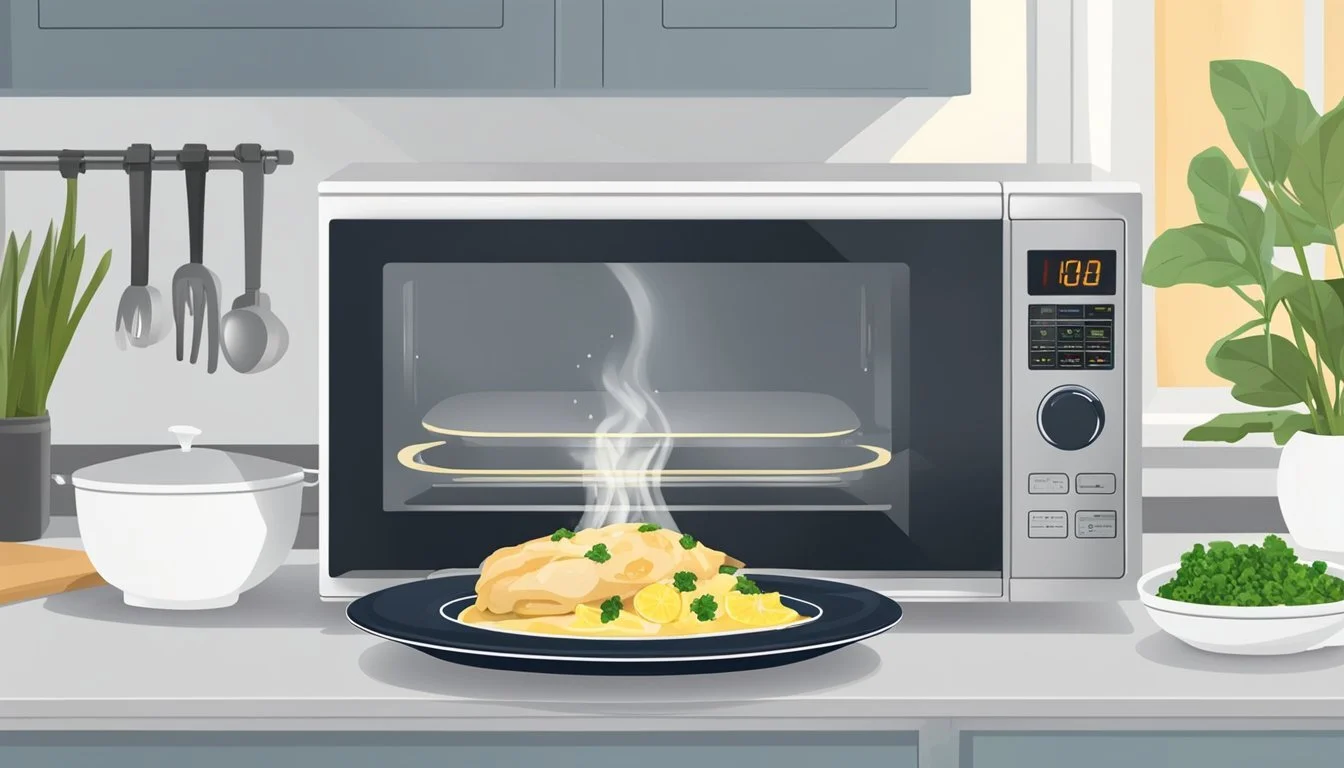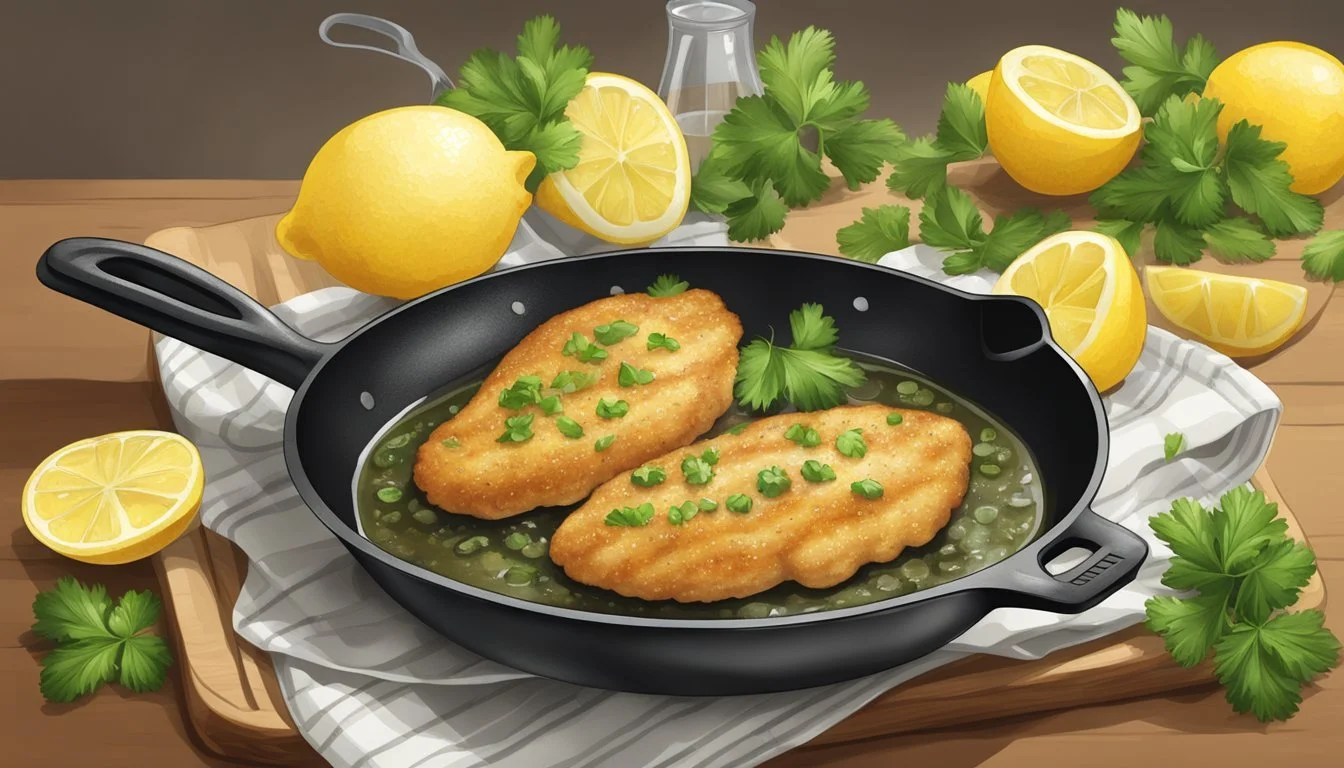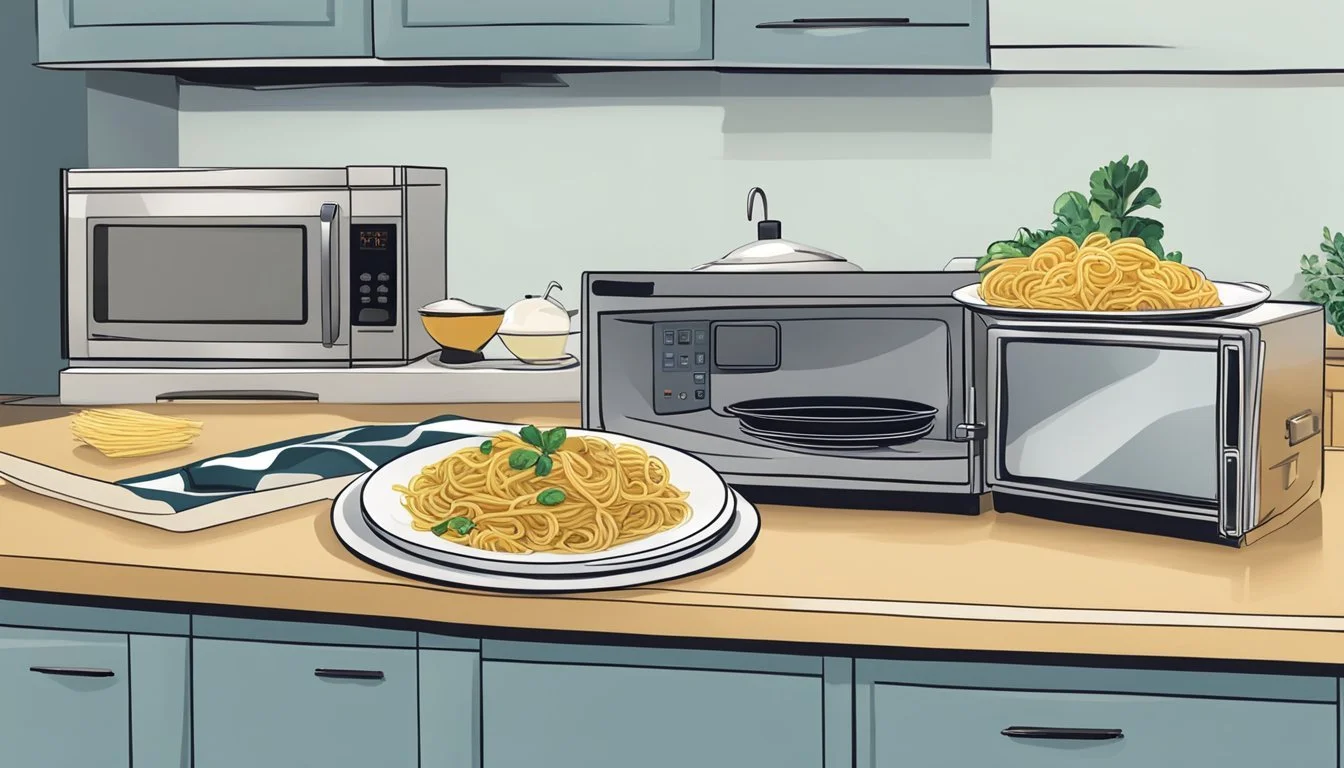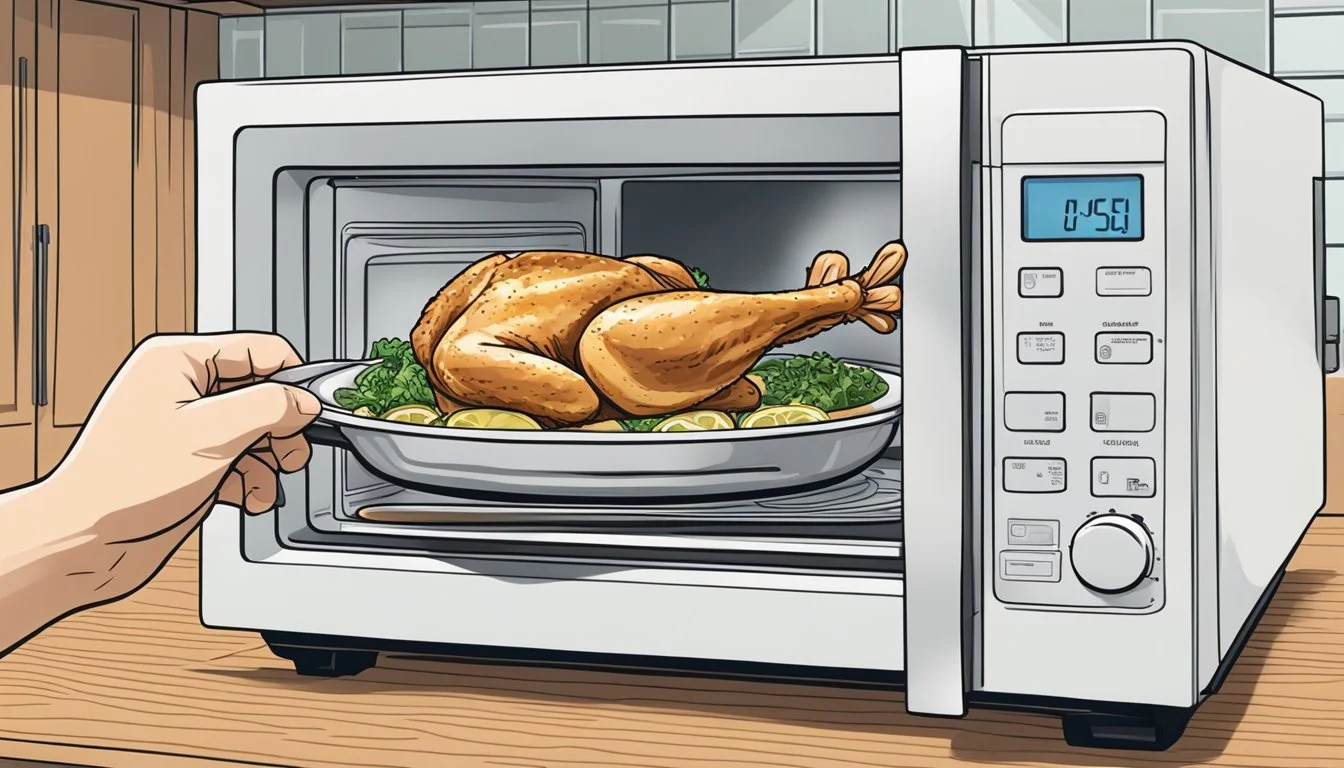How to Reheat Chicken Piccata
Best Methods and Tips
Reheating chicken piccata can be done effortlessly with the right techniques, ensuring the leftovers remain as delicious as when they were first cooked. Whether using a microwave, skillet, or even an air fryer, the goal is to maintain the chicken's tenderness and the sauce's rich flavors without overcooking or drying out the dish.
For a quick reheat, cover the chicken piccata with plastic film wrap and heat it on medium power in the microwave for up to 2 minutes, allowing it to sit afterwards to let the heat distribute evenly. Alternatively, reheating it on the stovetop in a skillet with a bit of olive oil or broth can help keep the chicken moist and the sauce lively.
If you have more time and want to experiment, try using an air fryer set to 350°F (175°C) for 3-4 minutes. This method can offer a crispy exterior while keeping the inside tender. Regardless of the method chosen, reheating chicken piccata can be simple and satisfying with these tips.
Understanding Chicken Piccata
Chicken Piccata is a classic Italian dish that boasts a rich, tangy flavor profile, characterized by the use of lemon, capers, and a buttery white wine sauce. Its simplicity and vibrant ingredients make it a favorite in many households.
Key Ingredients
Chicken Piccata primarily features chicken breast as the main protein. The chicken is typically pounded thin, dredged in flour, and pan-fried until golden. This process helps to create a crisp exterior that soaks up the flavors of the sauce.
The key to the dish's unique taste lies in lemon and capers. Lemon juice provides a fresh, zesty flavor, while capers add a salty, briny element that balances the richness of the butter.
Butter and white wine are essential components of the sauce. The butter adds a creamy texture, and the white wine contributes acidity and complexity. These ingredients, combined with chicken stock or broth, create a luscious sauce that enhances the dish's overall flavor.
The Italian Cuisine Connection
Chicken Piccata is firmly rooted in Italian cuisine. The term "piccata" refers to the method of cooking meat that is sliced, sautéed, and served in a sauce. Italian recipes often emphasize fresh, high-quality ingredients and simple preparation techniques, and Chicken Piccata is no exception.
In Italy, veal is more traditionally used in the recipe, known as "Veal Piccata." However, chicken breast has become a popular alternative, particularly in American adaptations of the dish.
This dish is a reflection of the Italian culinary philosophy, showcasing how minimal ingredients can create bold, harmonious flavors. Its adaptability and straightforward preparation make Chicken Piccata a beloved recipe in households worldwide, maintaining its Italian roots while allowing for personal variations.
Proper Storage Techniques
Properly storing chicken piccata ensures its flavors and textures are maintained for future meals. Leftovers should be managed quickly to prevent spoilage and maximize shelf-life.
Storing in the Fridge
To store chicken piccata in the fridge, first, let it cool to room temperature. This prevents condensation, which can cause sogginess. Portion the leftovers into airtight containers or resealable plastic bags, ensuring all air is squeezed out to maintain freshness.
Store it on a shelf rather than the refrigerator door. Label containers with the date to keep track of storage time. Chicken piccata can typically stay fresh in the fridge for up to 3-4 days. By refrigerating it promptly, you reduce the risk of harmful bacteria growth.
Freezing for Longevity
For longer storage, freezing is an excellent option. Allow the chicken piccata to cool to room temperature. Wrap each portion tightly in plastic wrap to prevent freezer burn. Place wrapped portions into a freezer bag or an airtight container, removing as much air as possible.
Label the containers with the date. Frozen chicken piccata can maintain quality for up to 2-3 months. When ready to use, thaw it in the fridge overnight. Avoid refreezing once it has been thawed to prevent texture degradation.
Proper storage techniques ensure your chicken piccata remains delicious and safe to eat, whether in the fridge or the freezer.
Pre-reheating Preparation
Before reheating chicken piccata, ensure it is properly thawed if it has been frozen. Preparing the dish beforehand can greatly impact the final taste and texture.
Thawing Frozen Chicken Piccata
Frozen chicken piccata should be thawed in the refrigerator. This method prevents bacterial growth and maintains moisture. Place the frozen chicken piccata in a dish to catch any liquid that drips.
For quicker thawing, submerge the sealed bag of chicken piccata in cold water. Change the water every 30 minutes to keep it cold. Avoid using warm or hot water, as it can cause uneven thawing and potential food safety issues.
Once thawed, allow the chicken to sit at room temperature for 10-15 minutes before reheating. This step ensures even reheating without drying out the meat. Always check for any unusual odor or texture before proceeding.
Choosing the Right Reheating Method
Reheating chicken piccata can involve various techniques depending on the resources available. It's important to carefully choose the method that best preserves the flavor and texture of the dish.
Oven Reheating
Using the oven ensures even heating for chicken piccata. Preheat the oven to 350°F (175°C). Place the chicken in an oven-safe dish and cover it with aluminum foil to prevent drying out.
Heat the chicken piccata for about 20 minutes or until it reaches an internal temperature of 165°F (74°C).
For an extra touch, you can add a bit of broth or lemon juice to maintain moisture. Toaster ovens can also be used with similar settings.
Stovetop Reheating
To reheat on the stovetop, use a nonstick skillet or saucepan. Add a tablespoon of olive oil or butter to the pan and heat over medium.
Once the pan is hot, add the chicken piccata and cook for 2-3 minutes per side or until warmed through.
To retain moisture, a splash of broth or water can be added to the pan. Stir occasionally to ensure the dish is evenly reheated.
Microwave Reheating
The microwave is suitable for speed but may not maintain the texture as well. Place the chicken piccata in a microwave-safe dish and cover with plastic film wrap or a microwave-safe lid.
Heat on medium power for 2 minutes. Allow the dish to sit for 2 minutes to let the heat distribute. If needed, heat for an additional minute. Ensure the internal temperature reaches 165°F (74°C).
Alternative Reheating Techniques
Other techniques include air fryers, sous vide, and broilers. In an air fryer, preheat to 350°F (175°C) and cook for 3-4 minutes. Sous vide involves placing the chicken in a vacuum-sealed bag and heating in a water bath at 145°F (63°C) for 30-45 minutes.
For a broiler, set to low and place the chicken piccata on a baking sheet. Heat for a few minutes on each side, ensuring it doesn't dry out. Each method offers a unique approach to reheating while preserving taste and texture.
Ensuring Optimal Flavor and Texture
Reheating chicken piccata effectively requires attention to moisture content and texture to preserve its original taste and quality. Key techniques involve proper use of liquids and the right balance of heat and timing.
Managing Moisture Content
Keeping the chicken piccata moist is crucial. When using a microwave or stovetop, add a small amount of chicken broth or lemon juice to the sauce. This ensures that the sauce retains its silky texture and the chicken doesn’t dry out.
Place the chicken in a microwavable dish, cover with plastic film, and heat on medium for up to two minutes. Let it sit for two minutes afterward. This resting period helps the heat distribute evenly.
If reheating on the stovetop, warm a skillet over medium heat, add a mix of olive oil and butter to prevent the chicken from sticking, and add some broth or wine around the edges for extra moisture. Adding seasoning such as salt and pepper can also enhance the flavor if needed.
Maintaining Crispiness and Juiciness
Achieving a balance between a crispy texture and juiciness is vital. To maintain the chicken’s crispiness, avoid overcrowding the pan. Place the chicken cutlets in a single layer in the skillet.
Heat 1-2 tablespoons of olive oil until it shimmers and add the chicken, heating each side for 2-3 minutes. This helps keep the exterior crispy while the interior remains juicy. Adding a splash of lemon juice or chicken broth can keep the meat tender.
Stovetop reheating is particularly effective for retaining the chicken’s texture and ensuring the dish stays flavorful. By combining moisture management and proper reheating techniques, chicken piccata can be enjoyed as though it were freshly made.
Safety and Quality Considerations
Proper reheating practices are essential to maintain both the safety and quality of chicken piccata. This involves ensuring the chicken reaches the correct internal temperature and recognizing signs of spoilage.
Checking Doneness and Temperature
When reheating chicken piccata, it's crucial to ensure that the internal temperature of the chicken reaches 165°F (74°C). Use a reliable food thermometer to check the temperature at the thickest part of the meat.
Avoid relying on visual cues alone, as the chicken can appear done on the outside but remain undercooked internally. Even reheated, the chicken should be moist and the sauce should be steaming.
Different reheating methods, like the oven or air fryer, may vary in the time needed to achieve the correct temperature. Adjust settings accordingly and prioritize safety to avoid foodborne illnesses.
Recognizing When Leftovers Go Bad
Leftover chicken piccata should be stored properly and consumed within safe limits to avoid spoilage. Typically, cooked chicken can be refrigerated for up to three days in an airtight container.
Signs that chicken piccata has gone bad include an off smell, slimy texture, or discoloration. Always inspect leftovers closely before reheating.
If the chicken has been left out at room temperature for more than two hours, it should be discarded to prevent bacterial growth. Understanding these signs ensures food safety and prevents potential health risks.






